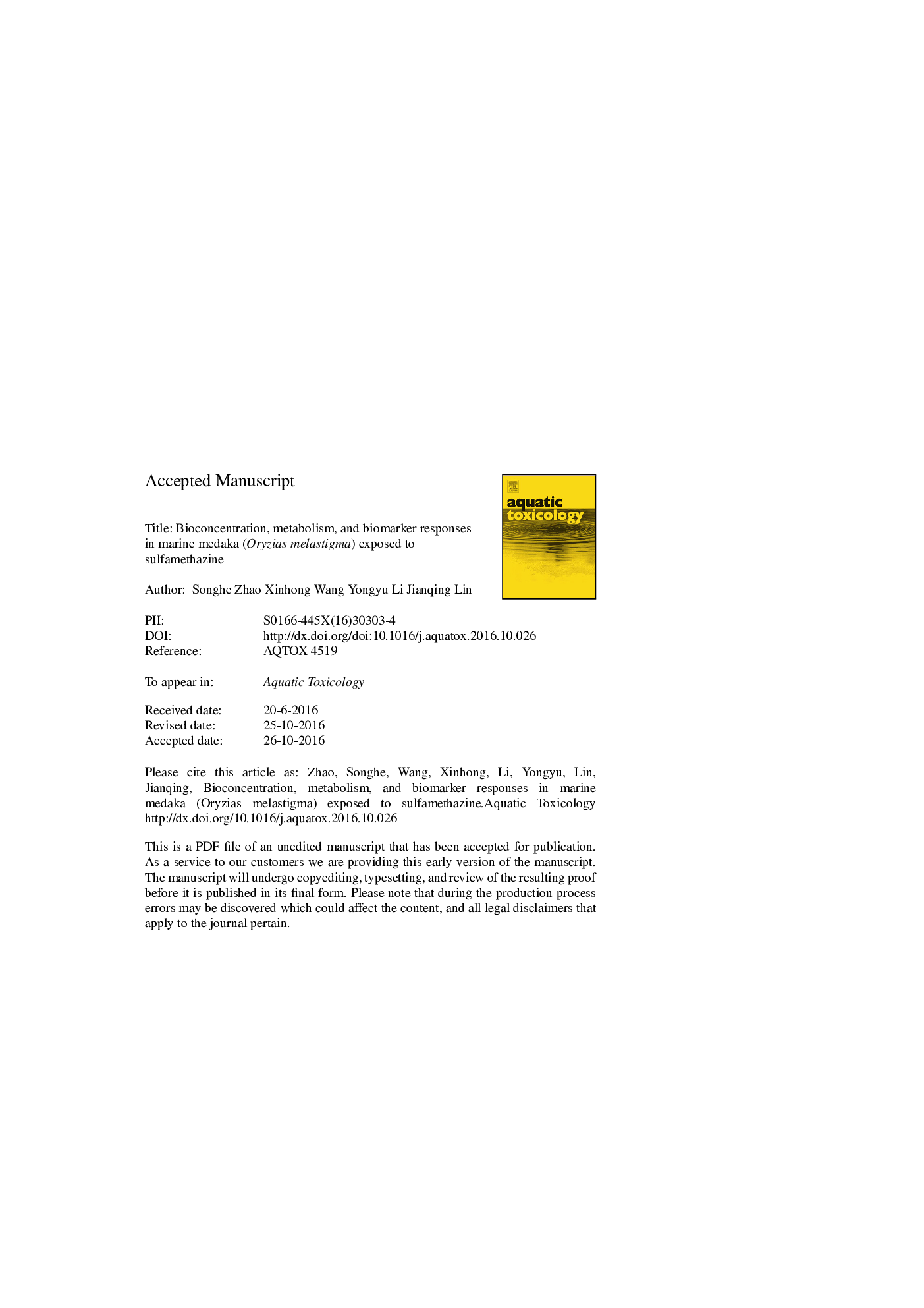| Article ID | Journal | Published Year | Pages | File Type |
|---|---|---|---|---|
| 6381777 | Aquatic Toxicology | 2016 | 25 Pages |
Abstract
The antibiotic sulfamethazine (SM2) is commonly used in agriculture and livestock for its broad-spectrum antibacterial properties. Due to its widespread application, SM2 is frequently detected in surface water and sediments. The objective of this study was to investigate the bioconcentration, distribution and biomarker responses of SM2 and its main metabolite, acetylated sulfamethazine (N-SM2) in medaka (Oryzias melastigma). Two treated groups of medaka were exposed to concentrations of 40 μg/L and 200 μg/L of SM2 for 24 h to simulate the habitual use of those antibiotics in aquiculture activities. SM2 and its main metabolite, N-SM2, were measured in several tissues during the 24 h uptake period by UPLC/MS/MS. The bile exhibited the highest SM2 concentration followed by the liver, gonad, gills, and muscle and the bioconcenration factor (BCF) was 10.69-42.95 in female fish and 2.78-145.36 in male fish. N-SM2 showed a different distribution pattern from the parent compound, accumulating mainly in the gonad, and its BCF was much higher in the male group. Gender-related differences were also observed in the bioconcentration, transform rate and biomarkers of SM2. Biomarkers (SOD, CAT) in the liver changed significantly after 2, 12, and 24 h of exposure (P < 0.05), and presented a double-peak phenomenon. These results indicated that SM2 can be absorbed and metabolized through multiple routes by fish in a short time. Interactions between biological systems and SM2 or its metabolites may induce biochemical disturbances in fish.
Keywords
CATSM2BAFsMDLUPLCBCFSPELOQSolid phase extractionUptakeLOD یا Limit of detectionBioaccumulationSODSulfamethazineSuperoxide dismutaseMass spectrometrybioconcentration factorBioaccumulation factorsFishlimit of quantificationlimit of detectionmethod detection limitsBiomarkersCatalaseUltra-performance liquid chromatography
Related Topics
Life Sciences
Agricultural and Biological Sciences
Aquatic Science
Authors
Songhe Zhao, Xinhong Wang, Yongyu Li, Jianqing Lin,
